Hail Damaged Roof Claim

Call and See if We Can Get You A Roof For "NO Out of Pocket Cost"
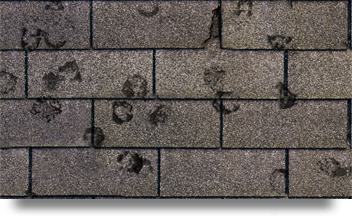

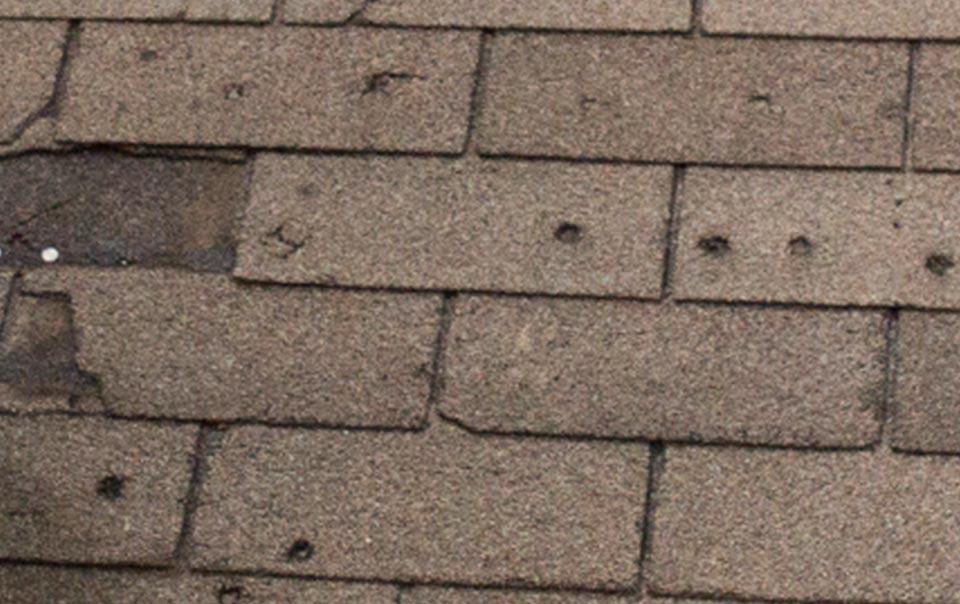
Hail, wind, and storm damages are considered an insurance loss on your homeowner's policy. It is the responsibility of the insurance company to pay the entire cost, less your deductible, for replacing the roof or other parts of your house if damages are found.
The claim is also considered a natural disaster and should not count against you personally for future rate increases.
DFW Best Roofing specializes in accident and weather related damage repair and replacement; including exterior roofing, gutters, siding, windows; also offering interior painting, sheetrock, ceiling texture, and flooring services.
What to do After a Hail Storm
Note the date and time of the storm. Your insurance claims manager will ask for the date & time of the loss and the storm event can be correlated with reports from the local weather and public safety authorities.
After the storm, walk around the property, taking photos of the:
Hail stones covering the yard, sidewalk and patios.
Hail stones set next to a tape measure.
(The size of a hail stone is directly proportional to the potential for damage to the roof and shingles)
Roof – looking for obvious signs of roof damage such as missing or torn shingles,
Outdoor air conditioning units
Hail stones can dent and bend the cooling fins, blocking the air flow
hail dents on gutters
Look around inside the attic for any signs of a leak
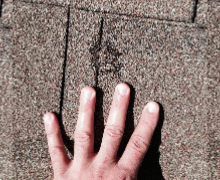
Hail Damage Roof Inspection
The following advice assumes your roof isn’t leaking necessitating emergency repairs, but you are concerned about functional hail damage to the shingles that could cause a leak over time if not repaired.
Before contacting your insurance agent, you should have a reputable roofing contractor inspect your roof for potential hail damage as quickly as possible. The roofing contractor will walk your roof to assess if it has sustained hail damage to reasonably justify an insurance claim.
The roof inspection is free because it’s cost of doing business for the roofing company to be in a position to quote the job if your insurance claim is approved. Be careful in how you choose a roofing contractor to avoid fraud and unauthorized work!
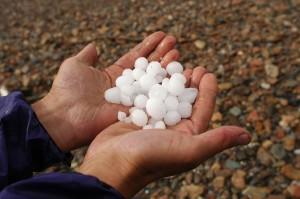
Roof inspection advice:
Make an appointment for a roof inspection.
Be at home to meet the roofing contractor.
Explain when and what happened during the hail storm, show the roofer your videos and/or photos if available. Request that the roofer to show pictures of area with the hail damage to review with you. Be absolutely clear that no repairs are to be made at this time, this is only an inspection!
Do not be pressured into signing anything! Go outside and watch while the roofer inspects your roof.

To file an insurance claim for roof hail damage:
Locate your homeowner’s insurance policy. Make a note of your insurance policy number and deductible. The deductible figure will be important as explained later.
Organize your facts and records; insurance policy number, date/time of loss, hail size (if known), photos, videos, damage items. Call your homeowner’s insurance claim number and provide the necessary information as requested. You will be given a claim number by your insurer. When an insurance claims examiner is assigned to your case, it helps to send your photos and videos of the hail storm for authenticity to better support your claim.
Claims Adjuster Roof Inspection
The claims adjuster will contact you to make an appointment to inspect the roof.
Offer to share your photos and/or videos of the storm with the adjuster. I e-mailed my hail storm photos and video to the adjuster, who thanked me for the assistance.
You should arrange for the roofing contractor who previously inspected your roof to meet with the insurance adjuster to go on the roof and discuss his findings.
The claim adjuster may bring along a “high team” to inspect steep and/or high roofs with proper safety gear.
The roof inspection includes the taking of numerous photos, looking at dents in the soft metals (gutters, box vents, powered attic ventilators) and the marking off 10 ft by 10 ft “test squares” to count the number of hail stone hits on the shingles. Hail stone hits will be marked with chalk for identification in photos.
The claims adjuster will write a report on his findings, prepare an estimate to make spot repairs or replace the roof (assuming damage was found), then forward the report to your claim examiner. The claim examiner will review the report and make a decision on your claim.
Don’t be surprised if your neighbor’s roof hail damage claim is approved while yours is not. Your roofing contractor will most likely make his own measurements to verify the insurance adjuster’s figures and may order an aerial roof survey as well.

Help with roof insurance adjustment estimate
The adjuster’s estimate is a key document that:
Itemizes the roof replacement costs for labor and materials.
The roofing contractor will use these figures to as the basis for the contract.
Calculates the Replacement Cost Value (RCV), Depreciation (DEPREC) and Actual Cash Value (ACV).
RCV the full cost of the repair/replacement.
Depreciation is the decrease in fair value of the roof due to age.
ACV is the Replacement Cost (RCV) minus Depreciation (DEPREC).
R&R in the adjustment worksheet means “Remove & Replace”
SQ means roofing “square” of shingles, equal to 100 square feet area.
LF means lineal feet.
Here is an example how the insurance claim's payment works
If for example, The claim examiner sent me a check for the Actual Cash Value (ACV) minus my $500 deductible for a Net Claim of $13,855.78, but this falls far short of the $18,434.43 roof replacement cost! What’s going on?!
The difference is the $4,078.65 depreciation (decrease in fair market value) for an 11 year old roof was withheld from the initial claim payment. The reason for withholding the depreciation is some homeowner’s might take the claim check for $13,855.78 and spend it on something other than having the roof repaired. (If you “take the money and run” it can have severe consequences such as having a claim denied for subsequent storm damage that causes the roof to leak and flood the home!)
Its important to make the responsible decision to have my roof replaced which enabled me to file for the recoverable depreciation of $4,078.65 by having the roofing company send a copy of the invoice directly to the claim examiner after the new roof was installed. The insurance company then wrote another check for $4,078.65 for the withheld depreciation.
DFW Best Roofing will guide you through every step of the insurance process:
Step 1: Call DFW Best Roofing and set-up a free inspection
Step 2: If we find damage, sign our contract for us to work with your insurance company and then contact your insurance company to file a claim. Tell them your contractor is Bosworth Roofing & Remodeling. Click here to find the contact information for some of the insurance companies we have worked with.
Step 3: Either call us with your adjuster’s information or have your adjuster call us directly so that we can set up an appointment. It is very important to make sure we are there to represent you during this appointment. Do not allow your adjuster to look at your roof alone even if they say they do not need us or will bringing their own contractor.
Step 4:DFW Best Roofing and your insurance adjuster will discuss covered damages and come to a verbal agreement.
Step 5: The adjuster will send you paperwork with what damages are covered. Forward any paperwork to DFW Best Roofing before signing so that we can verify that the damages have been fairly evaluated and reported accurately.
Step 6: Sign our contracts, choose a date, and we can discuss shingle, gutter, siding, and/or paint colors.
Step 7: Deposit 1st insurance check into personal checking account (may require endorsement by mortgage company). Then write us a personal or bank check in the amount of the 1st insurance check.
Step 8: After work is completed, DFW Best Roofing will send all paperwork necessary to your adjuster for them then release the held deprecation money (exclusions apply).
Step 9: Send us a personal or bank check in the amount of your 2nd insurance check.
Step 10: Enjoy your beautiful new roof, siding, gutters, painting, etc! It's as easy as that!
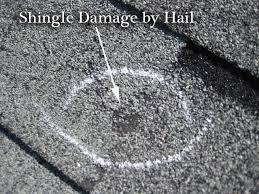
If you live where hail happens most often — basically everywhere in the country east of the line of states running south from Montana — you know it can knock the life out of your roof, making it unlikely to survive into old age the way it would in some place like Rio.
Insurance companies have figured that out, too, and they’re looking to cut their losses by limiting your roof coverage. Hail-related claims increased 84% between 2010 and 2012, according to the National Insurance Crime Bureau.
How to Know if Your Insurer is Out to Cut Hail Claims
Look for changes like these in your renewal policy:
Refusing to cover roofs over a certain age (like 10 years).
Adding a separate hail deductible that’s subtracted from what you’re paid on a hail claim.
Excluding cosmetic damage like dents in metal roofs, siding, or copper trim.
Doing roof inspections that note the condition and age of your roof before issuing a policy.
Not covering roofs made from obsolete shingles. (You can’t buy replacement shingles for patches.)
Doing partial roof repairs instead of replacing your whole roof (possibly leaving you with a patch that’s a different color than your original roof).
The Biggest, Costliest Insurance Change of All
The big bummer for us consumers: Insurers paying actual cash value rather than replacement value for roof damage.
If you have actual cash value roof coverage, your insurance company will discount your roof claim based on how old your roof is. That can reduce your claims payment by thousands of dollars and leave you with a high-dollar roof replacement bill.
The insurers’ rationale: Your old roof isn’t worth as much as a new roof, so you don’t deserve a new roof when hail damages your old roof.
How Do You Know If Your Policy Pays Actual Cash Value?
Read the declaration page of your policy. Call your insurance agent. Ask specific questions.
Hints that your company is moving you to actual cash value: The company asks how old your roof is or sends an inspector to look at your roof. If you have replacement cost coverage, the age of your roof doesn’t matter. The only reason it would be important to know the age of the roof is if the insurance company plans to pay you for its actual cash value.
If you don’t want actual cost value coverage, you can purchase replacement cost coverage. But you’ll pay more for that. If your homeowners insurance company adds roof coverage restrictions, shop around for an insurer that won’t limit your hail damage claims. If you don’t want actual cost value coverage, you can purchase replacement cost coverage. But you’ll pay more for that.
If your homeowners insurance company adds roof coverage restrictions, shop around for an insurer that won’t limit your hail damage claims.
By the way, hail damage has cost insurance companies so much money that the Insurance Institute for Business and Home Safety (IBHS) created an indoor hail storm to research how different building materials used in roofs, windows, siding, and gutters hold up in storms. The science geeks actually shot man-made hail — a mix of frozen water and seltzer water — from hail cannons at up to 76 mph.
The study found homeowners with metal and wood roofs were twice as likely to file claims; those with slate, wood, and metal roofs have the highest average claim costs (not surprising given the price of those materials).
If you live in severe hail-prone areas, your roof will likely need to be replaced every seven to 10 years compared with every 20 years for homeowners in less stormy areas, according to insurance industry data.
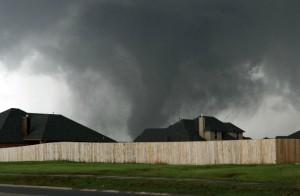
Money-saving tip: Ask your insurance agent if you qualify for a homeowners insurance discount for using storm-resistant building materials.
Scams Boost Premiums, Too .. It’s not just hail itself driving up costs; it’s also fraud. Corrupt roofers show up after a hail storm offering to check your roof for damage.
Once they’re up there, they damage your roof or worsen what the storm did and then offer to make the repairs. Scammers also try to pocket more profit by repairing roofs with inferior materials and performing shoddy work.
Insurance Claims
Hail, wind and storm damage are considered an insurance loss on your homeowner’s policy. Most insurance companies will pay the entire cost, less your deductible, for replacing the roof if it is damaged. The claim is also considered a natural disaster and does not count against you for future rate increases. Excellent Roofing specializes in accident and weather related damage repair and replacement; including exterior roofing, gutters, siding, widows; and interior painting, sheetrock, ceiling texture, flooring, and carpet cleaning. We will help you deal with your insurance company and meet with your insurance adjuster if requested. Our involvement prevents you from getting stuck with a settlement that won’t cover your costs, or even worse, getting denied. With Excellent Roofing you pay no out-of-pocket expense other than your insurance deductible. We agree to accept what your insurance company will pay for the claim, including your deductible, and ensure the highest quality repair or replacement. You may also benefit from upgrades that we typically offer as signing incentives, such as upgrading the customer from 3-tab shingles to architectural shingles at no additional charge. Our company is also the most credentialed roofing contractor in the Mid-South, and our employees are trained to the highest standards.
Our Process
First, we ask that you provide us with a copy of your insurance adjusters summary report so we can review the scope of work and check all measurements to ensure all damage is fairly evaluated and reported accurately
Second, we match our contract to the work specified in the insurance adjusters summary report, including any supplements that may need to be added if the insurance adjuster missed something.
Third, we fax the signed contract to the insurance company.
Fourth, if there is a mortgage on the home, the mortgage company’s name will most likely be on the check along with yours. Most likely there will be several forms to be filled out and notarized. We provide our Fed Ex account for you to overnight the check for endorsement and forward the documents needed to process.
Insurance Claims – FAQ
Q. How do I know if I hail damage? My roof isn’t leaking.
A. In a hailstorm, most hail that hits your roof and house may be too small to cause any damage. However, a percentage of the hail may be large or irregularly shaped, which can cause severe damage that may not be readily apparent and may not start to leaking for some time. It’s best to have your roof inspected by a state licensed roofing contractor to determine if you need to file an insurance claim and have an insurance adjuster assess the total amount of damage incurred.
Q. The insurance company withheld depreciation on my roof. Will I get that money?
A. Yes. Most all home owners policies cover full replacement value. The first check the insurance company gives you is the Actual Value (AV); what the roof is worth today with it’s useful remaining life. The money that was withheld is call the depreciation, or technically, the Replacement Value (RV) and will be paid to you when the work is completed or most times upon the submission of a signed contract with a licensed contractor for the work specified in the insurance adjusters summary report.
Q. Why did the insurance company withhold depreciation?
A. There are two reasons that the insurance companies hold some money back. The first reason is to make sure that you get the work done. Past experience has shown them that, if they give the customer all the money up front, many people end up spending it on something else. The second reason is that they wish to make sure that you pay your full deductible. The insurance companies reason that, if you are given all the money to begin with, many people would naturally try to find a contractor who would perform the job for the dollar amount in hand. By holding a retainage amount, they can adjust the amount of the final payout based on the roofing contractor’s invoice, thus assuring that the customer does pay the deductible.
Q. How can I avoid paying the deductible?
A. Legally, you can’t. Of course, a roofer in collusion with a homeowner can submit falsified invoices. However, doing so is insurance fraud. Please don’t ask us to do this.
Q. On my paperwork, it looks like my insurance company has already deducted my deductible from the check they sent me?
A. When most people look at their insurance paperwork they are confused, because they think the insurance company deducted their deductible from the money the insurance company has sent them. However, the deductible is the amount that the homeowner is responsible for paying directly to the contractor. The insurance company subtracts the home owners deductible amount on the paperwork from the total amount the insurance company allows for the claim, since the homeowner will pay their deductible directly to the contractor. The balance after subtracting what the homeowner will pay directly to the contractor as a deductible, is the total amount the insurance company will actually pay for the claim.
Q. The insurance is only paying for part of my roof, and my neighbor’s insurance company paid for their entire roof; why is my insurance company only paying for part of my roof?
A. No two houses receive the same amount of damage in a storm. Your neighbor may have sustained extensive damage, and you may have received none. The insurance company will only pay for the actual damages incurred. If the entire roof was not damaged, unfortunately the insurance company cannot pay for the whole roof. However, if is it border line, it always helps to have your roofing contractor inspect the roof with your insurance adjuster to accurately assess all damage to the roof. Sometimes insurance adjusters may not be able to see all the damage if they’re not able to walk on a step roof and photograph certain areas. Excellent Roofing ensures a helpful presence to look out for your best interest and assist the insurance adjuster if needed with damage assessment, photographs, and measurements.
Q. Should I get several estimates?
A. It is always prudent to get more than one estimate. However, when insurance is paying for the work, the dollar amount of the estimate is not very important as long as it is equal to or less than the insurance company estimate. In all such cases, with Excellent Roofing, you will only be paying your deductible, so your cost with us will be what the insurance company pays, plus your deductible. Therefore, your decision should be based on going with the contractor that you feel most comfortable with and whom you feel will perform the best job.
Q. What if your estimate is greater than the insurance company’s estimate?
A.. Usually this is because of something the insurance adjuster missed in the scope of work to be completed. We can almost always work something out with the insurance company. We will submit what is called a “supplement” with documentation in the form of pictures, measurements and paperwork. The insurance company will review the supplement and upon approval, send a check for the additional monies needed to make the repairs.
- Areas We Serve
- Cities We Serve
Areas We Serve
75002 (Allen)
75006 (Carrollton)
75007 (Carrollton)
75009 (Celina)
75010 (Carrollton)
75013 (Allen)
75019 (Coppell)
75022 (Flower Mound)
75023 (Plano)
75024 (Plano)
75025 (Plano)
75028 (Flower Mound)
75032 (Rockwall)
75034 (Frisco)
75035 (Frisco)
75038 (Irving)
75039 (Irving)
75040 (Garland)
75041 (Garland)
75042 (Garland)
75043 (Garland)
75044 (Garland)
75048 (Sachse)
75050 (Grand Prairie)
75051 (Grand Prairie)
75052 (Grand Prairie)
75054 (Grand Prairie)
75056 (The Colony)
75057 (Lewisville)
75060 (Irving)
75061 (Irving)
75062 (Irving)
75063 (Irving)
75065 (Lake Dallas)
75067 (Lewisville)
75068 (Little Elm)
75069 (McKinney)
75070 (McKinney)
75071 (McKinney)
75074 (Plano)
75075 (Plano)
75077 (Lewisville)
75078 (Prosper)
75080 (Richardson)
75081 (Richardson)
75082 (Richardson)
75087 (Rockwall)
75088 (Rowlett)
75089 (Rowlett)
75093 (Plano)
75094 (Plano)
75098 (Wylie)
75101 (Bardwell)
75104 (Cedar Hill)
75114 (Crandall)
75115 (Desoto)
75116 (Duncanville)
75119 (Ennis)
75125 (Ferris)
75126 (Forney)
75132 (Fate)
75134 (Lancaster)
75135 (Caddo Mills)
75137 (Duncanville)
75141 (Hutchins)
75142 (Kaufman)
75146 (Lancaster)
75147 (Mabank)
75149 (Mesquite)
75150 (Mesquite)
75152 (Palmer)
75154 (Red Oak)
75157 (Rosser)
75158 (Scurry)
75159 (Seagoville)
75160 (Terrell)
75161 (Terrell)
75164 (Josephine)
75165 (Waxahachie)
75166 (Lavon)
75167 (Waxahachie)
75172 (Wilmer)
75173 (Nevada)
75180 (Mesquite)
75181 (Mesquite)
75182 (Sunnyvale)
75189 (Royse City)
75201 (Dallas)
75202 (Dallas)
75204 (Dallas)
75205 (Dallas)
75206 (Dallas)
75207 (Dallas)
75208 (Dallas)
75209 (Dallas)
75210 (Dallas)
75211 (Dallas)
75212 (Dallas)
75214 (Dallas)
75215 (Dallas)
75216 (Dallas)
75217 (Dallas)
75218 (Dallas)
75219 (Dallas)
75220 (Dallas)
75223 (Dallas)
75224 (Dallas)
75225 (Dallas)
75226 (Dallas)
75227 (Dallas)
75228 (Dallas)
75229 (Dallas)
75230 (Dallas)
75231 (Dallas)
75232 (Dallas)
75233 (Dallas)
75234 (Dallas)
75235 (Dallas)
75236 (Dallas)
75237 (Dallas)
75238 (Dallas)
75240 (Dallas)
75241 (Dallas)
75243 (Dallas)
75244 (Dallas)
75246 (Dallas)
75247 (Dallas)
75248 (Dallas)
75249 (Dallas)
75251 (Dallas)
75252 (Dallas)
75253 (Dallas)
75254 (Dallas)
75270 (Dallas)
75287 (Dallas)
75390 (Dallas)
75401 (Greenville)
75402 (Greenville)
75407 (Princeton)
75409 (Anna)
75415 (Ben Franklin)
75422 (Campbell)
75423 (Celeste)
75424 (Blue Ridge)
75428 (Commerce)
75432 (Cooper)
75441 (Enloe)
75442 (Farmersville)
75448 (Klondike)
75450 (Lake Creek)
75453 (Lone Oak)
75454 (Melissa)
75469 (Pecan Gap)
75474 (Quinlan)
75496 (Wolfe City)
76001 (Arlington)
76002 (Arlington)
76006 (Arlington)
76008 (Aledo)
76009 (Alvarado)
76010 (Arlington)
76011 (Arlington)
76012 (Arlington)
76013 (Arlington)
76014 (Arlington)
76015 (Arlington)
76016 (Arlington)
76017 (Arlington)
76018 (Arlington)
76020 (Azle)
76021 (Bedford)
76022 (Bedford)
76023 (Boyd)
76028 (Burleson)
76031 (Cleburne)
76033 (Cleburne)
76034 (Colleyville)
76039 (Euless)
76040 (Euless)
76041 (Forreston)
76044 (Godley)
76050 (Grandview)
76051 (Grapevine)
76052 (Haslet)
76053 (Hurst)
76054 (Hurst)
76058 (Joshua)
76059 (Keene)
76060 (Kennedale)
76061 (Lillian)
76063 (Mansfield)
76064 (Maypearl)
76065 (Midlothian)
76066 (Millsap)
76071 (Newark)
76073 (Paradise)
76078 (Rhome)
76082 (Springtown)
76084 (Venus)
76085 (Weatherford)
76086 (Weatherford)
76087 (Weatherford)
76088 (Weatherford)
76092 (Southlake)
76093 (Rio Vista)
76102 (Fort Worth)
76103 (Fort Worth)
76104 (Fort Worth)
76105 (Fort Worth)
76106 (Fort Worth)
76107 (Fort Worth)
76108 (Fort Worth)
76109 (Fort Worth)
76110 (Fort Worth)
76111 (Fort Worth)
76112 (Fort Worth)
76114 (Fort Worth)
76115 (Fort Worth)
76116 (Fort Worth)
76117 (Haltom City)
76118 (Fort Worth)
76119 (Fort Worth)
76120 (Fort Worth)
76123 (Fort Worth)
76126 (Fort Worth)
76127 (Naval Air Station-Jrb)
76129 (Fort Worth)
76131 (Fort Worth)
76132 (Fort Worth)
76133 (Fort Worth)
76134 (Fort Worth)
76135 (Fort Worth)
76137 (Fort Worth)
76140 (Fort Worth)
76148 (Fort Worth)
76155 (Fort Worth)
76164 (Fort Worth)
76177 (Fort Worth)
76179 (Fort Worth)
76180 (North Richland Hills)
76182 (North Richland Hills)
76201 (Denton)
76205 (Denton)
76207 (Denton)
76208 (Denton)
76209 (Denton)
76210 (Denton)
76225 (Alvord)
76226 (Argyle)
76227 (Aubrey)
76234 (Decatur)
76244 (Keller)
76247 (Justin)
76248 (Keller)
76249 (Krum)
76258 (Pilot Point)
76259 (Ponder)
76262 (Roanoke)
76266 (Sanger)
76426 (Bridgeport)
76431 (Chico)
76487 (Poolville)
76490 (Whitt)
76623 (Avalon)
76651 (Italy)
76670 (Milford)
Does my roof have hail damage?
After a hail storm, homeowners are often curious to see whether their roof has experienced enough damage to be eligible for an insurance claim.
Hail damage leaves many different types of traces. If the hail is really big, the signs may be quite obvious. However, if the hail is small it is harder to detect. If the hail is pea size it may not have don't much damage to the roof, but any thing over a quater size needs to be examined. So, if the hail is not obvious its a good idea to get professional to help out. Hire someone who actually knows about how hail causes damage. So, he actually knows if the insurance company should be called or not. A lot of roofers not experienced in hail, but may be good roofers, many have the homeowner make a claim, even though there may be hail damage, but still does not meet the criteria of an insurance claim. So, when the property owner files a claim, then that can work against the property owner. So, be careful who you hire.
If you see hail falling, its a good to take pictures. Even better would be to take pictures with a ruler. This is good for the adjuster from the insurance company to see. Even better is also put a few hails in the freezer !! A trained professional is able to analyze whether a deteriorating roof is the result of hail damage or a roof simply nearing the end of its lifespan.
It just so happens that a lot of time people are sleeping when it hails. Then the only time people realize it hailed is when they see a bunch of roofers going door to door.
This is because roofers get weather updates.
If your neighbors are getting new roofs chances are you should too.
One of the easiest ways to tell if that your roof has hail is that the gutter has dents all over it on at least two or three sides of the house. Some of the other signs of a hail damage includes, air conditioners with damaged fins, damaged siding, missing sections of the gutters. Some of the other well known indicators of hail damage is as follows.

HAIL INDICATORS
Bruising: Bruising occurs when a hailstone’s impact disperses the roof’s granules.
Bruising will feel like indentations on your roof’s surface. They are not always visible but should be addressed upon discovery, as failure to do so can cause holes to eventually form in your shingles, leaving your roof vulnerable to nature’s elements.
Missing or Loose Granules: This one is tricky because this symptom can also be a sign that your roof is nearing the end of its lifespan. To verify if this is happening due to hail damage, see whether the displaced granules have now uncovered the roofing underlayment. If it is faded, it means that the condition is preexisting. However, if it is not discolored, it is likely that this is a new phenomenon.
Cracking: Large hailstones, hitting your roof at a high enough velocity can cause cracking in circular patterns. Should you find this on your roof, address as soon as you can, as failure to do so can lead to a leaky roof.
Dented Roof Vents: Should your roof vents have been dented, it’s probable that the roofitself has been damaged by hail. Contact your insurance company and a local, reputable contractor, who can offer a professional opinion and information on repair and replacement costs.
Compare the hail damage to a roof that has lost is life expectancy...
Buckling Shingles: This can occur when new shingles are placed on top of old shingles or the roof was not properly installed. It can also be a sign of poor ventilation. When the shingles buckle, it means that moisture is underneath them. This can often signal that a whole new roof is needed.
Water Spots on Your Ceiling: Discolored spots on your ceilings are caused by leaks in stains your roof. The damage doesn’t stop with the unsightly spots. Left ignored major damage can occur and a homeowner can be forced to also replace their ceilings and/or drywall.
Curling Shingles: There are several reasons this can happen. One is that the roofer disregarded the manufacturer’s nail per shingle recommendations. If a roof is inadequately insulated, moisture may build up in a home’s attic. Because it needs to curling to go somewhere, it will slowly become trapped between the underlayment and shingles. Each shingle has an adhesive strip that connects it to the row below it. If that strip, called back coating, is not properly attached to the row below it curling can occur. Weather elements cause your roof to expand and contract. During this process, the nails holding your shingles down can be forced upwards which can cause shingles to curl.
Roof Rotting: Roofs begin to rot when the shingles have absorbed moisture all the way to the core. This is a serious matter and should be addressed as quickly as possible by a roofing professional.
Missing Shingles: This problem often occurs in the spring and cast be the result of high winds, ice and snow damage. Another possibility is that shingles were not installed correctly. Regardless, it’s important to call a roofing professional to get your roof back to its original condition. An untrained person trying to do this on their own can incorrectly replace the shingles which can cause your roof to leak.
Missing Granules: When a roof is first replaced, it’s normal to have some granules (small ceramic coated rock specs that cover an asphalt shingle’s surface) dislodged from the shingles. However, if this continues, your roof’s lifespan will be greatly decreased because the asphalt on your shingle has been exposed to weather elements. If you are noticing this problem on an older roof, it’s likely that it needs to be replaced. You can check your gutters to see if you see a lot of missing granules.
Blistering: Blisters which look like bubbles just under the surface of your shingle’s granules are caused by moisture trapped in a shingle. The shingle may not need to be blistering replaced until it breaks open. Once a shingle breaks open, it may become discolored and water leakage may become an issue.
Flashing that is Damaged: Roof flashing is a piece of sheet metal placed on the joints in a roof to keep water from seeping into the structure. It is installed before the shingles. Flashing that has not been installed correctly or is damaged can cause leaking. In some cases, flashing is able to be replaced in the damaged area only.
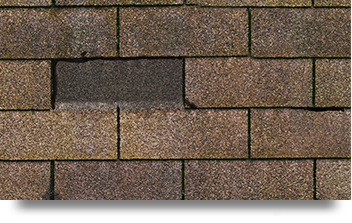
What to do After a Hail Storm-
Note the date and time of the storm. Your insurance claims manager will ask for the date & time of the loss and the storm event can be correlated with reports from the local weather and public safety authorities.
We do not recommend that you get on top of the roof. Its better you call your local roofing company to inspect the roof, a safe bet would be to call us at 817 381 6855.
There may be some out of state companies, it important to hire a local company who will be around in your area for many years to come.
A lot of times people think that if the roof is leaking, that is the only sign of roof damage. This is not true, hail coming down is much like a bunch of people hammering the roof for like 2 to 5 minutes and sometimes even more. hail cracks the mat of the shingles, and knocks out the granules in the case of shingle roofs. A metal roof may have dents in key areas like where two parts of the metal roof come together, or the dents may leave a small pool of water that will rust the metal. Tiles may be cracked. All this changes how long your roof will last, or its life expectancy. The function of the roof is to shed water. This type of damage leaves the roof with serious damage. This is why you need a professional to look at the roof, and determine if the integrity of the roof has been kept.
Some of other signs, as an example are
Asphalt and Composition Shingles Hail Damage
- Random damage with no discernable pattern.
- Hail hits that are black in color.
- Loss of granules, which may expose the roof felt.
- Asphalt and/or mat that appears shiny.
- Hail hits that are soft to the touch, like the bruise on an apple.
- Wood Shingles Hail Damage
- Random damage with no discernable pattern.
- A split in the shingle that is brown/orange in color.
- A split in the shingle that has sharp corners and edges.
- A split in the shingle that has little to no deterioration at the edges.
- Impact marks or dents along the splits.
There are many other types of damage to shingles that can be mistaken for hail damage. For example, exposure to inclement weather and sunlight makes shingles brittle and gives them an aged appearance. This type of damage is normal wear and tear of shingles, which is sometimes misidentified as hail damage. Other types of normal wear and tear may include blistering, cracking, granule loss, flaking and algae. Manufacturing defects and mechanical imperfections in shingles can also be mistaken for hail damage.
After the storm, I grabbed my digital camera and walked around the property, taking photos of the:
Hail stones covering the yard, sidewalk and patios.
Hail stones set next to a tape measure.
The size of a hail stone is directly proportional to the potential for damage to the roof and shingles.
Roof – looking for obvious signs of roof damage such as missing or torn shingles,
Outdoor air conditioning units.
Hail stones can dent and bend the cooling fins, blocking the air flow.
Look around inside the attic for any signs of a leak.
To file an insurance claim for roof hail damage:
Locate your homeowner’s insurance policy.
Make a note of your insurance policy number and deductible. The deductible figure will be important as explained later. Organize your facts and records; insurance policy number, date/time of loss, hail size (if known), photos, videos, damage items.
Call your homeowner’s insurance claim number and provide the necessary information as requested.
You will be given a claim number by your insurer.
When an insurance claims examiner is assigned to your case, it helps to send your photos and videos of the hail storm for authenticity to better support your claim. The claim examiner will assign an claims adjuster to make an official roof inspection and prepare a repair estimate.
Claims Adjuster Roof Inspection
The claims adjuster will contact you to make an appointment to inspect the roof.
Offer to share your photos and/or videos of the storm with the adjuster. I e-mailed my hail storm photos and video to the adjuster, who thanked me for the assistance.
You should arrange for the roofing contractor who previously inspected your roof to meet with the insurance adjuster to go on the roof and discuss his findings.
The claim adjuster may bring along a “high team” to inspect steep and/or high roofs with proper safety gear.
The roof inspection includes the taking of numerous photos, looking at dents in the soft metals (gutters, box vents, powered attic ventilators) and the marking off 10 ft by 10 ft “test squares” to count the number of hail stone hits on the shingles. Hail stone hits will be marked with chalk for identification in photos.
The claims adjuster will write a report on his findings, prepare an estimate to make spot repairs or replace the roof (assuming damage was found), then forward the report to your claim examiner. The claim examiner will review the report and make a decision on your claim.
Don’t be surprised if your neighbor’s roof hail damage claim is approved while yours is not. Whether or not an insurance claim is ultimately approved is highly variable depending on the severity of the damage, your roof’s construction, orientation of your house to the storm, quality of roofing materials and your particular insurance company’s evaluation criteria.


